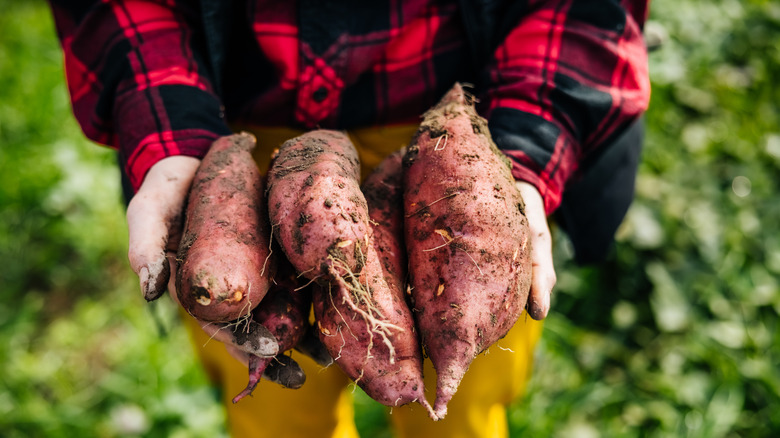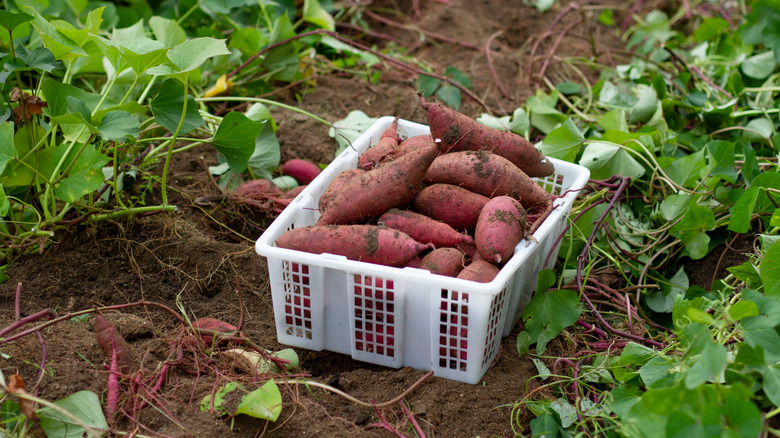The Leafy Sign Your Sweet Potatoes Are Ready To Harvest
While kale may be one of the easiest vegetables to grow, you might be looking for something with a little more heft to add to your garden. Enter sweet potatoes. These tubers are not only delicious, but they're also a beginner-friendly crop. The tricky part is knowing exactly when to harvest them, so we spoke to Michael Clarke, landscape architect and horticulturist and founder of Yardwork, to learn the signs he watches for to determine the right time.
According to Clarke, the leaves of the plant are a great indicator. "The leaves on the vines will usually yellow, die-back[,] and lose vigor, becoming sparser with slower vine growth," Clarke said. He explained that once new growth slows — meaning fewer new leaves — the sweet potatoes are likely mature and ready to harvest. "This typically starts [three to four] months after planting."
However, Clarke noted that while this method is common, it isn't foolproof. "This is a moderately reliable sign since leaf die-back can also result from disease, drought, or cold stress," he said, adding that it nonetheless provides a good cue approximately 90 to 120 days after planting.
More tips on harvesting the best sweet potatoes
To avoid mistakes when harvesting produce from your garden — such as picking your sweet potatoes too early or too late — Clarke said timing is key. "Most varieties mature in [90 to 120] days, counted from transplanting, not sprouting," he said. "This is often the most accurate cue when combined with leaf condition." You can also gently dig around one plant — preferably at the row's end — to check root size. "The tuber skin should also be firm and not easily scraped off with a finger."
It's also good to know proper garden care from the beginning to ensure a bountiful yield. For example, how often you water your vegetable garden matters. In the case of sweet potatoes, you'll want to give them plenty of water in the beginning to help them establish their roots, then reduce watering about three to four weeks before harvest.


